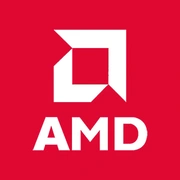AMD Phenom II X4 975 BE

AMD Phenom II X4 975 BE: A Retro Processor for Enthusiasts in 2025
An overview of the capabilities, limitations, and use cases of the legendary "chip" from the DDR3 era.
Key Features: Architecture and Legacy
The AMD Phenom II X4 975 BE, released in 2011, became one of the last representatives of the Phenom II lineup before the company transitioned to the Bulldozer architecture. Despite its age, it continues to attract the attention of budget build enthusiasts.
- Deneb Architecture: 4 cores without multi-threading support (4C/4T), base clock speed of 3.6 GHz, unlocked multiplier for overclocking.
- 45nm Process Technology: Considered outdated even for 2025, leading to a high TDP (125W) and limited energy efficiency.
- Cache Memory: L2 — 2 MB (512 KB per core), L3 — 6 MB (shared among all cores).
- Performance: In Geekbench 6 (2025) tests — 307 points (single-core), 950 (multi-core). In comparison, the modern Ryzen 3 7300X scores around ~1800/6000 points.
Key Features:
- Overclocking potential up to 4.0–4.2 GHz with air cooling.
- Support for older operating systems, including Windows XP, which is appreciated by retro gamers.
- No integrated graphics — the GPU depends on the motherboard chipset (e.g., AMD 790GX with Radeon HD 3300).
Compatible Motherboards: Hunting for Rarities
The Phenom II X4 975 BE uses the AM3 socket, but is also physically compatible with AM2+ (with BIOS update). In 2025, new boards for this processor are not being produced, so options are limited to the used market or leftover stock.
Recommended Chipsets:
- AMD 790FX/GX: For overclockers—advanced VRM modules and CrossFire support.
- AMD 890GX: More modern options with SATA 3.0 and USB 3.0 (via third-party controllers).
- AMD 970: Budget boards, but with limited overclocking potential.
Example Models:
- ASUS M4A79T Deluxe (790FX) — an iconic board for enthusiasts, used price — $40–60.
- Gigabyte GA-890GPA-UD3H — a stable option with USB 3.0, used — $30–50.
Important: When purchasing, check the condition of capacitors and the availability of an updated BIOS. Many boards suffer from bulging electrolytic capacitors.
Memory: Only DDR3 and Modest Limits
The processor supports DDR3 with an official frequency of up to 1333 MHz, but with memory controller (IMC) overclocking, it can work with modules of 1600–1866 MHz.
Recommendations:
- Use dual-channel kits of 2×4 GB or 2×8 GB (maximum capacity — 16–32 GB depending on the board).
- Timings of CL9–CL11 — an optimal balance for overclocking.
- DDR4/DDR5 not supported — this is a major limitation for upgrades.
Real Experience: On boards with the 890GX chipset and BIOS P2.10, it was possible to run Kingston HyperX Blu 2×8 GB 1600 MHz (CL9) overclocked to 1866 MHz.
Power Supply: Count the Watts
With a TDP of 125W and peak consumption up to 140W (during overclocking), the minimum power supply wattage is 500W.
Tips:
- Choose models with an 80+ Bronze certification and a strong +12V line (at least 30A).
- Avoid cheap noname blocks — the Phenom II is sensitive to voltage fluctuations.
- Examples: EVGA 600 BQ (600W, $55) or Corsair CX550 (550W, $60).
Important: If planning to install a discrete graphics card (e.g. GTX 1650), add a buffer to the power (+100–150W).
Pros and Cons: Who Would Benefit from the Phenom II in 2025?
Pros:
- Low cost: used processors range from $15–25, new (if you can find one) — $50–70.
- Easy overclocking: even a newcomer can squeeze out a 10–15% increase.
- Reliability: runs for years with proper cooling.
Cons:
- No support for AVX, SSE4.2 — issues with modern software.
- High power consumption: 3–4 times less efficient than Ryzen 3.
- Limited multi-threading: 4 threads versus 8+ on modern CPUs.
Use Cases: Where is the Phenom II Still Relevant?
1. Retro Gaming: Running older games (pre-2015) like GTA IV, Skyrim, or World of Warcraft: Cataclysm.
2. Office Tasks: Working with documents, browsers, light editors.
3. Home Server: NAS or media center based on Linux.
4. Educational PC: For learning the basics of building and overclocking.
Limitations: Modern games (Cyberpunk 2077, Starfield) will yield only 10–15 FPS even on minimum settings.
Comparison with Competitors: A Battle of Generations
- Intel Core i5-2500K (2011): Better in single-core tests (Geekbench 6 — ~400), but pricier in the used market ($25–35).
- AMD FX-8350 (2012): 8 cores but weak IPC — better multi-threading (Geekbench 6 — ~1200), TDP 125W.
- Ryzen 3 2200G (2018): 4 times more energy-efficient, integrated Vega 8 graphics, DDR4 support — used starting from $50.
Conclusion: The Phenom II X4 975 BE lags behind even budget CPUs from 2018–2020, but wins in price.
Building Tips: How to Avoid Mistakes
1. Cooling: A cooler with TDP dissipation of at least 150W — for example, Deepcool Gammaxx 400 ($20).
2. SSD is a Must: A SATA drive (Kingston A400, 240GB — $25) will speed up the system.
3. Graphics Card: GTX 1050 Ti or RX 560 — the maximum without a bottleneck.
4. Drivers: For Windows 10/11, use modified chipset drivers from Level1Techs forums.
Final Verdict: Who Should Consider the Phenom II X4 975 BE in 2025?
This processor is suitable for:
- Enthusiasts building retro PCs or experimenting with overclocking.
- Budget users needing a computer for $100–150 for basic tasks.
- Fans of upgrading old systems without replacing the motherboard.
Why not to choose it as a primary PC:
Even the cheapest new processor in 2025 (e.g., Intel Celeron G6900 — $60) will be faster and significantly more energy-efficient.
The Phenom II X4 975 BE is a piece of history, not a tool for productive work. But that's precisely its charm.
Basic
CPU Specifications
Memory Specifications
GPU Specifications
Benchmarks
Compared to Other CPU
Share in social media
Or Link To Us
<a href="https://cputronic.com/en/cpu/amd-phenom-ii-x4-975-be" target="_blank">AMD Phenom II X4 975 BE</a>